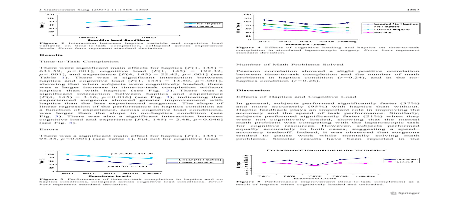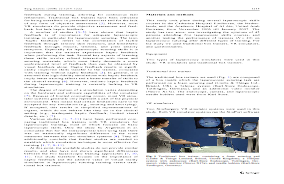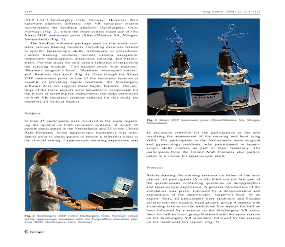haptic feedback in surgical simulators

Using two surgical simulators, the MIST-VR system and the ProMIS system, researchers compared the time to complete a surgical task and the errors that occured.
The MIST-VR system is a virtual reality system with no haptic feedback. It is made up of a computer, a monitor, and laparoscopic tool base. The ProMIS system is a physical simulator that consists of a life size model of the upper torso with a computer, monitor, and laparoscopic tools. This system offers haptic feedback similar to that in actual surgery.
Applying haptic feedback in vr simulation


The subjects (thirty surgical residents and attendings) performed significantly faster (37%) and more accurately (95%) with haptics than without haptic feedback. Therefore, haptic feedback plays an important role in improving the accuracy and the speed of the task performance.
VR Simulation vs box trainer
Another study compares the importance of haptic feedback in surgery simulation for laparoscopic suturing training.
Extensive practice is very important to become a skilled laparoscopic surgeon and many surgeons use box trainers or VR simulators to increase psychomotor skills and translate that into improved performance in the operating room. The study focuses on the importance of haptic feedback and the additive value of virtual reality simulation in laparoscopic suturing training versus box trainers.
The traditional box trainers used are composed of a box inside which the laparoscopic suturing task are performed on a foam suturing pad.
The participants used both the box trainer and VR simulator and then filled out a questionnaire regarding their opinion on the simulators used in the study and its role in training.

Traditional Box Trainer

SimSurgery VR laparoscopic simulator
The questionnaire asked about the realism and haptic feedback of both simulators and the preferences regarding laparoscopic suturing training.
After the participants completed the study, researchers concluded that there was no significant difference in outcome between box trainers and VR simulators. However, there was a big difference in opinion on which system is preferred.
HAPTIC FEEDBACK CHALLENGES
Challenges facing the laparoscopic surgeon include the loss of haptic (tactile) feedback due to the interposition of long instruments between the surgeon’s hand and the tissue. To compensate for the compromised haptics, the surgeon has to rely on visual input from the operating field. However, with laparoscopic surgery, there is a loss of important depth cues due to the use of a two-dimensional display monitor.
During laparoscopic procedures, the major part of the haptic feedback is lost. However the little haptic feedback that remains is valuable and it is therefore important that the simulator system provides haptic feedback, preferably as optimal as possible. A disadvantage of the majority of
VR simulators is the absence of haptic feedback to the surgeon.
One of the most controversial issues in VR laparoscopic simulator design, as it is very complicated to incorporate realistic haptic feedback into VR systems. In particular for laparoscopic suturing training, because of the interactions between the instruments, needle, thread, and tissue, it is
important that haptic sensations during the simulation is optimal, but this has not yet been achieved in VR simulation.
One advantage of the traditional box trainer over most VR simulators is that it provides the haptic feedback that is absent in most VR systems. Additionally, it allows the trainee to use whatever instruments he or she prefers to use in the operating room, and they are less expensive. While VR trainers may have some advantages, most participants of studies on this topic feel that traditional box trainers help them more, are more interesting, and are preferred over VR trainers if only one trainer is allowed.
The participants favored the box trainers, which involved the use of real needle drivers and interaction with real needle, thread, and suturing pad, over the suturing module of the VR simulator. Therefore, VR simulators have not achieved the proper haptic feedback of surgical instruments yet and there is still plenty of improvements that has to be made to mimic an actual surgery.
